Jacques Jordaan was giddy. The normally stoic professional hunter was grinning ear to ear and texting his friends like a middle school girl. Every bit of his elation was justified. I had just given my trusted PH a set of Leupold’s brand new BX4 Range HD 10×42 Rangefinding Binoculars and he was very, very pleased.

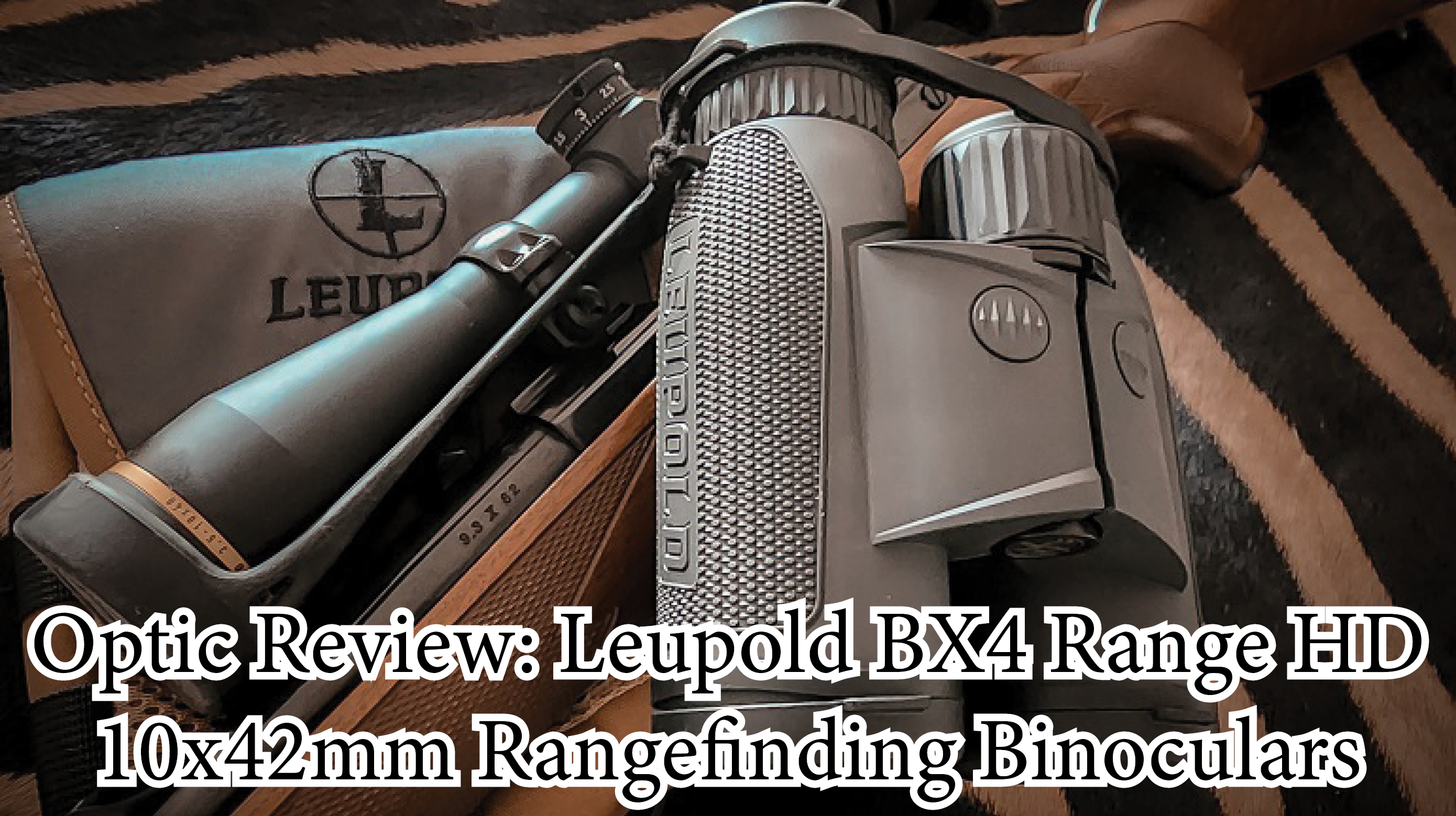
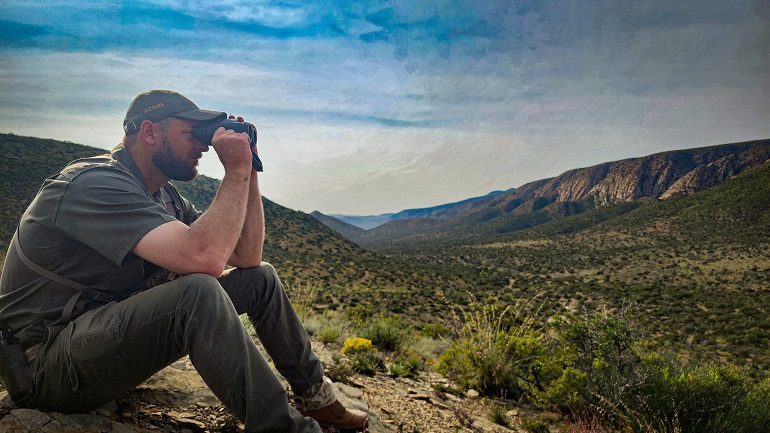
Image courtesy JWT for thetruthaboutguns.com
For this safari, Jacques took me away from his gorgeous Free State property that bordered the hills of Lesotho and instead met up with William Hayward of Doornrivier Safaris in the eastern edge of the Succulent Karoo Desert in South Africa’s Eastern Cape.
I was intent on continuing my hunt for the Tiny Ten, the pygmy antelope of southern Africa. Jaques took me to Will’s property for free range Klipspringer, as well as a shot at completing the Springbok Slam on their home turf.
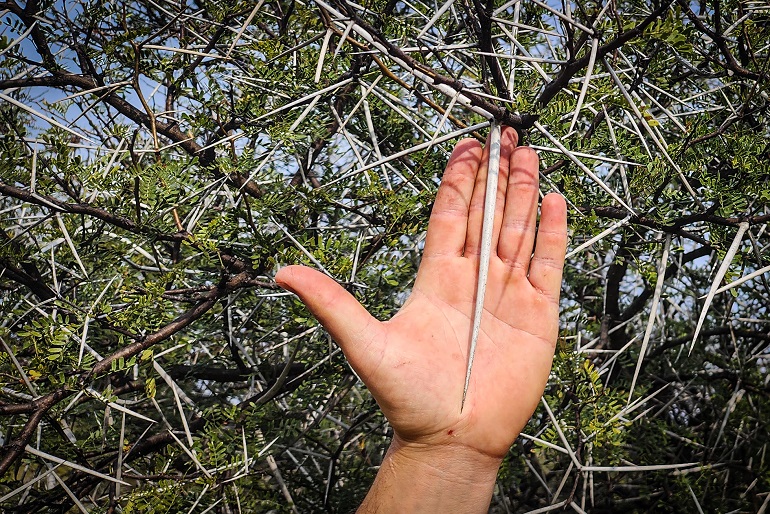
Image courtesy JWT for thetruthaboutguns.com
The Succulent Karoo is a brutal, beautiful landscape. Every stone tries to trip you. Every ledge has an edge, and they’re all jagged. Every plant has a thorn, and half of them are toxic. And then there was our quarry.
Klipspringer are small. They don’t herd up and are usually solitary or in mating pairs. They blend in perfectly with their environment, and they’re found in some of the most challenging, practically vertical areas on the continent.
Getting to them in the Karoo is hard. Spotting them is even harder. Shots are often 300 yards or more, taken at an angle, and in wind, on a small target. Jaques had chosen a challenging, but potentially rewarding arena for the hunt. Fortunately for me, he chose a great local PH as well.
William knew the area well, his family having settled there almost 150 years ago. Although the Kudu was a staple of his family’s diet, he claimed the Klipspringer was his favorite animal to hunt. For something so small, and partially because of that size, they are formidable prey. No, the “Klipy” won’t kill you, but where he lives certainly will.
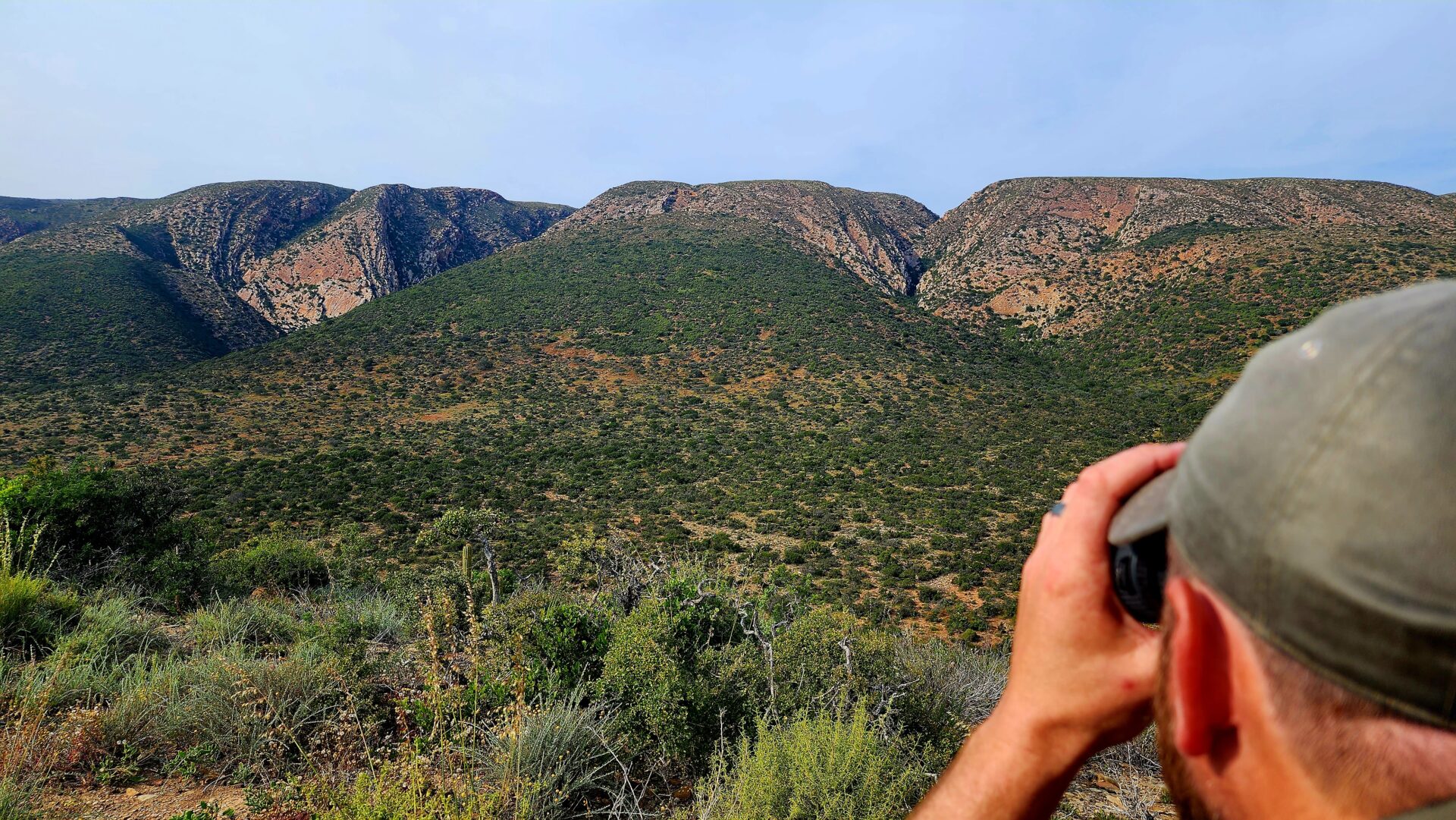
Image courtesy JWT for thetruthaboutguns.com
For this hunt, Will would lead our party up and down the spurs and draws of the mountains. We’d climb one ridge, glass until we’d exhausted what we could see, then head down the draw and up the next to do it all over again.
We’d walk more than 10 miles, up and down the scree in a single day. Without anything less than outstanding optics, we’d likely overlook our diminutive prey during the effort. Jacques had outstanding optics. The Leupold BX4 Range HD is clearly best in class when it comes to image quality and light transition, the most important aspects of any binoculars.
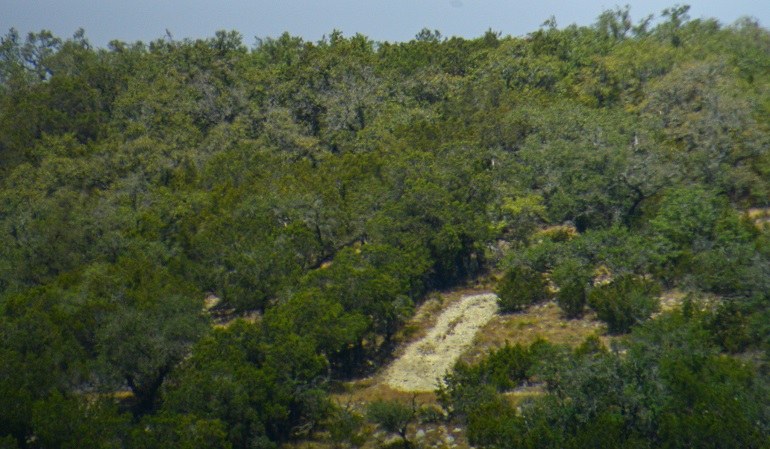
Image courtesy JWT for thetruthaboutguns.com
The image above was shot near sunset. Those familiar with my reviews may recognize that road. It’s about 800 yards from where I’m standing taking this photo through my camera phone. Note that, given the multiple lenses of these new phones, it’s very difficult to get it lined up just right, so the very clear image above really doesn’t do the Leupold binoculars justice. Even so, the image is outstanding.
I had two other people do a blind test between this set of Leupold BX4 Range HDs, a set of Vortex Fury HDs, and a set of Leica Geovid Pros. Two people couldn’t tell the difference between the image quality of these and the Leicas (the youngest eyes could) and everyone quickly pointed out the superiority of the Leupold glass to the Vortex binoculars.
Lens coatings aren’t cheap, but they make a big difference. Leupold invested heavily in their “light management system” some years ago, and it’s paid big dividends. We did the same test after the sun had just set. In the twilight, none of the glass tested outperformed the Leupolds, for any of the people looking through them.
Jacques put that glass clarity to the test — and to good use — and not just on our Klipsringer hunt. For a change of pace, we took a trip over to the Eastern Cape, looking for bushbuck. While glassing a hill with the BX4’s, Jacques said, “There, bushbuck female.” He walked me into where he was looking, but I still couldn’t find it.
Finally he said, “right there, 700 yards, you can see her ears sticking up in the bush.” Her brown ears, in a brown bush, 700 yards away. I gave him a two-word response before giving up in disgust. Jacques has the eyes of a PH in his 30’s who spends almost no time looking at a screen and whose livelihood is based on his ability to see animals very far away, but I chalked it up to the better glass.
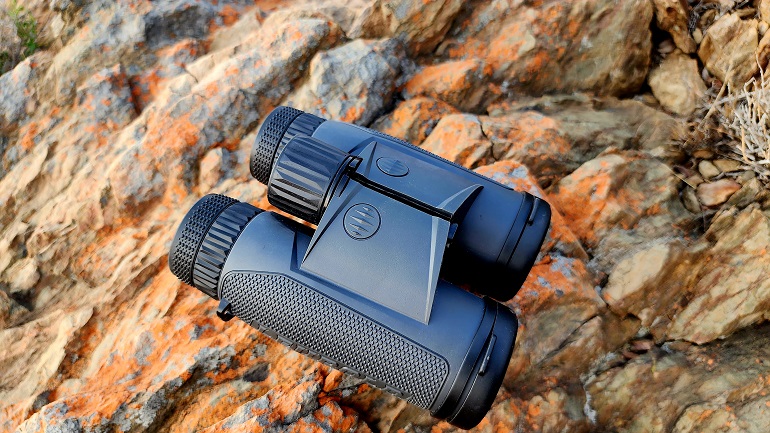
Image courtesy JWT for thetruthaboutguns.com
When it comes to durability, other than perhaps an arctic expedition, nothing is a better test than a solid safari. While I’ve had nothing but great experiences with Leupold glass on previous safaris, there’s no way I was willing to take untested glass to the Dark Continent.
Before I left, I filled up a sink with water and let the BX4 Range HD sit overnight. Just like the previous Santiam line I tested, not only was there no issue with water leaking or electronics failing, but the coatings (and clean water) meant there was no spotting on the glass after it was dry.
The binoculars also got a good 100+ degree temperature swing test. I put them in the freezer overnight, pulled them out and used them in 106 degree Texas heat. They worked just fine without fogging. Finally, I simply dropped them from waist height onto the ground a few times. This test is really unnecessary as the rubberized surfaces and overall build quality assured there wouldn’t be an issue. There wasn’t.
At the camp before our first hunt, Jacques was giddy testing out the features on the BX4 Range HDs. I had already tested the accuracy of the laser and computational model out to 1,000 yards and found it accurate within a single yard at that distance. It also measured the exact same as a professional surveyor’s equipment on 4-foot white steel targets out to 1,500 yards, which is as far as I could test it.
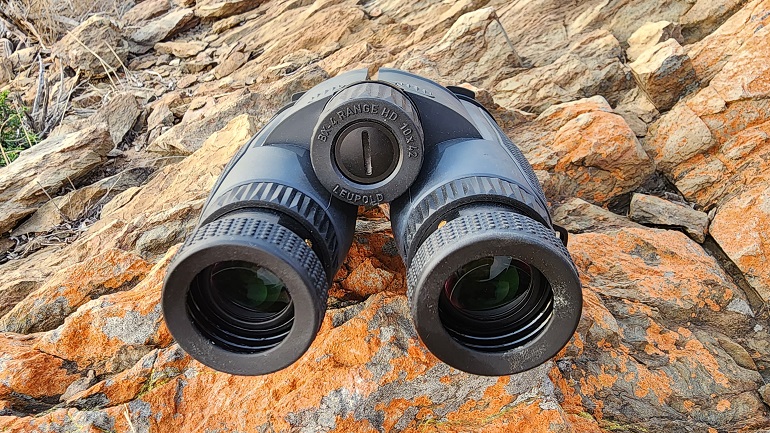
Image courtesy JWT for thetruthaboutguns.com
Jacques was interested in the accuracy, but also the speed. Like me, he was pleased.
“They did a very good job with the speed of the measurement”, he said, scanning from camp and up into the sides of the Winterhoek mountains before our hunt.
He was right, they did. The “fire” button can be switched to either side. When pushed, we got fast, accurate readouts on out-buildings and cars out to 1,400 yards there in camp. Simply holding down the button gives you constant readouts as you pass over your targets. Throughout the hunt Jacques was regularly measuring Kudu past 1,000 yards.
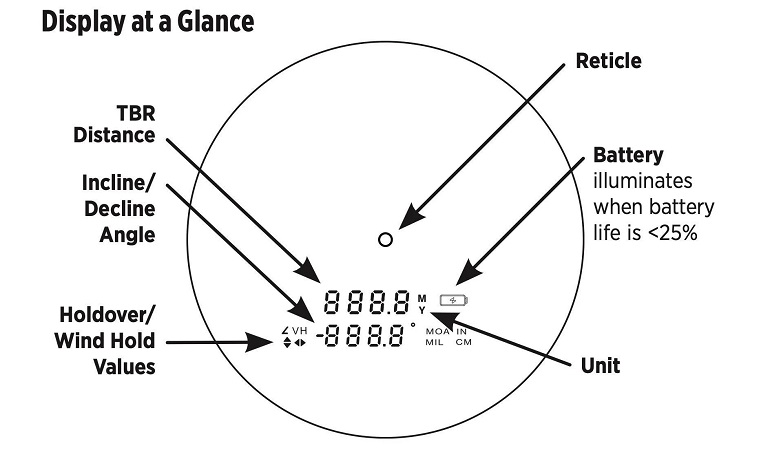
Image courtesy JWT for thetruthaboutguns.com
As you’d expect, the BX4 Range HD includes multiple ranging modes. Two of those are very compatible with other models, the Bow and Line of Sight (LoS) modes. The Bow mode provides angle compensated measurements out to 175 yards. The LoS is exactly as it sounds, giving you the simple straight-line distance to your target.
It’s the True Ballistic Range (TBR) with Wind range that sets the Leupold BX4 Range HD apart from many other systems that use the simpler “Rifleman’s Rule” angle compensated measurement. Leupold has 25 different ballistic settings. I rarely like these kinds of group settings and prefer the systems that allow you to program your specific load, but those generally also require some kind of app on your phone or other device to program. The Leupold system is completely self-contained. That’s no small consideration.
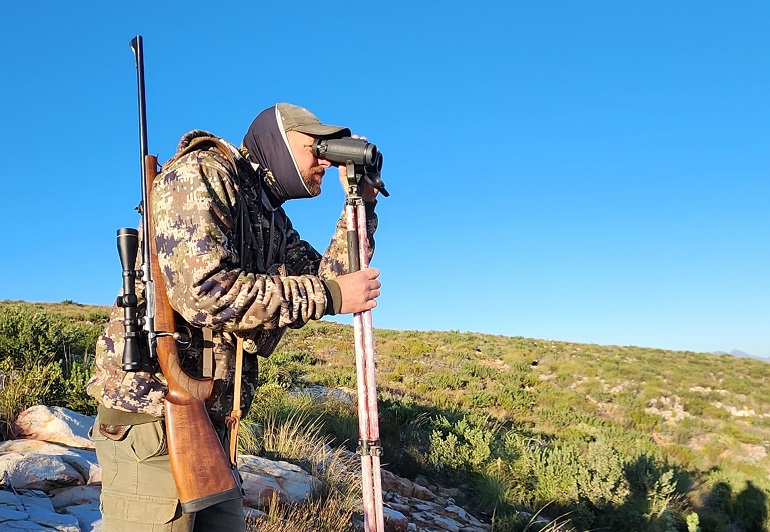
Image courtesy JWT for thetruthaboutguns.com
If you’re using an off-the-shelf rifle in a standard caliber and commercial ammunition, you should find a match in the 25 groups. We certainly did for Jacques, finding an exact match for his CZ chambered in .270 Winchester. The Leupold binoculars didn’t just give us the perfect elevation, but also a dead-on wild hold for a 10mph crosswind.
The glass quality and TBR-W features were put to good use on that first Klipspringer hunt. As Mr. Hayward scouted our path up and down the hills, Jacques glassed the sheer rock faces. Even with the BX4 Range HDs, how anyone could possibly spot those tiny creatures at distance is beyond me, but Jacques did.
Calling us all to a stop, he pointed across a canyon to the opposite hillside. Following his instructions, I saw the doe first, standing, reading to leap. Perfectly camouflaged, just below her feet, a solid male Klispringer cautiously eyed us.
Jacques’ eyes never left the glass as I dropped to a kneel. He gave me a distance and a call. A single shot later, the pygmy antelope I’d come all this way for slid down the rocky hillside.
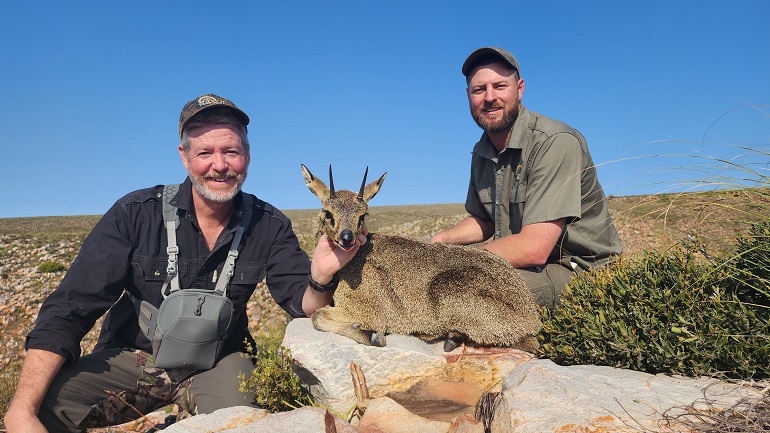
Image courtesy JWT for thetruthaboutguns.com
William’s guest had a successful hunt. I had my klipy in the salt, and Jacques had one hell of a set of binoculars. Lekker!
Specifications: Leupold BX4 Range HD 10x42mm Rangefinding Binoculars
- Battery Type: CR2
- Display Type: Red OLED
- Length (in): 5.9
- Weight (oz): 39
- Magnification: 10
- Objective Lens Diameter (mm): 42
- Linear FOV (ft@1000 yd): 334
- Angular FOV (Degrees): 6.2
- Eye Relief (mm): 17
- Min Diopter (dpt): -3.5
- Max Diopter (dpt): 3.5
- Close Focus Distance (ft): 13
- Battery Life (Actuations): 3000
- Max Range – Deer (yd): 1100
- Max Range – Trees (yd): 1600
- Max Range – Reflective (yd): 2600
- Min Range (yd): 12
Overall * * * * *
Leupold hyped this rangefinding binocular setup for over a year…and they were worth the wait. The Leupold BX4 Range HD 10x42mm Rangefinding Binoculars combine excellent glass with rugged reliability and accurate, fast measurements. The TBR-W mode gives good holds for most hunting applications and Leupold’s Elite Optical System is second to none when it comes to near dark image quality.
Copyright 2023 | All Rights Reserved | Powered by WILD & JAG / GAME & HUNT

